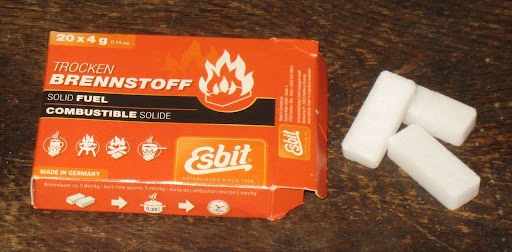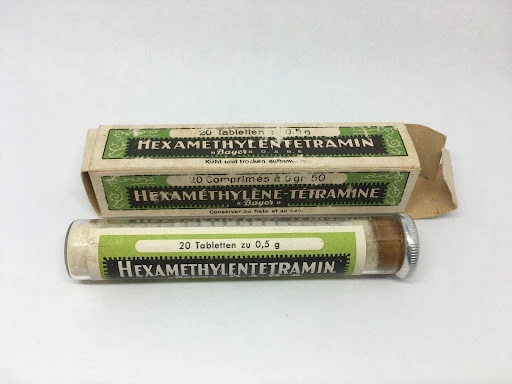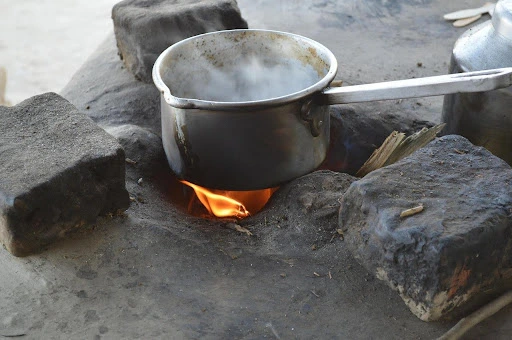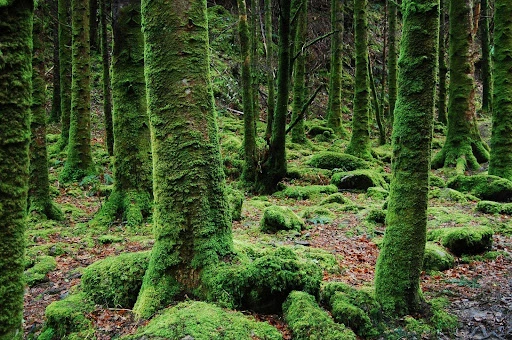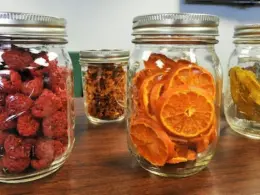When you’re miles from nowhere and craving a hot meal or a steaming cup of coffee, your stove choice can make or break the moment. For campers watching every ounce, solid fuel stoves like hexamine tablets and trioxane bars offer a lightweight, no-fuss way to cook in the wild.
But each has its strengths and quirks, and picking the wrong one could leave you with a cold dinner or a smoky mess. This guide explores the pros and cons of hexamine and trioxane fuels, breaking down their performance across various camping styles and environments, so you can choose the best heat source for your next adventure.
Table of Contents
What Are Hexamine and Trioxane Stoves?
Hexamine tablets, often branded as Esbit, are small, white squares of hexamethylenetetramine, a chemical compound that burns hot and clean. Paired with a folding metal stove, they’re a favorite among ultralight backpackers.
Trioxane bars, developed for military rations, are blue-tinted, snap-apart fuel bars designed to heat meals or start fires. Both fit into compact stoves or can burn on a flat surface, delivering heat without the complexity of dealing with liquid fuel systems.
Hexamine Stoves: Pros and Cons
Hexamine stoves are a go-to for minimalists who want heat without hassle. Here’s how they stack up.
Pros of Hexamine Stoves
- Lightweight and Compact: A single 14-gram tablet and a foldable stove weigh less than four ounces combined, slipping easily into a backpack pocket. Perfect for ultralight hikers or emergency kits.
- Reliable Ignition: Lights easily with a match or lighter, even in damp conditions, and burns with a steady, smokeless flame for 8-12 minutes. One tablet can boil 16 ounces of water in about eight minutes on calm days.* Long Shelf Life: Sealed tablets last nearly forever, making them ideal for long-term storage or sporadic trips. No leaks or evaporation to worry about, unlike liquid fuels.
- Clean Burn: Leaves minimal ash, reducing cleanup and environmental impact. The flame’s consistent heat excels at boiling water for dehydrated meals or drinks.
Cons of Hexamine Stoves
- Chemical Odor: The ammonia-like smell from burning hexamine can cling to gear and hands. It’s not pleasant, and in enclosed spaces, fumes may irritate lungs or eyes.
- No Flame Control: Burns at full intensity with no way to simmer, limiting cooking to boiling tasks. Want to sauté or slow-cook? Look elsewhere.
- Wind Sensitivity: Gusts can scatter the flame, slowing boil times and wasting fuel. A windscreen is a must in exposed areas.
- Cost and Soot: At $0.50-$1 per tablet, costs add up for longer trips. The flame can also leave sooty residue on pots, requiring extra scrubbing.
Hexamine shines for solo backpackers or emergency scenarios where weight and reliability matter most. It’s less ideal for group cooking or complex recipes.
Trioxane Stoves: Pros and Cons
Trioxane bars, often found in surplus stores, are a rugged, budget-friendly option for campers. Here’s what they bring to the fire.
Pros of Trioxane Stoves
- Fire-Starting Power: Trioxane excels at igniting wet wood or tinder, doubling as a fire starter for campfires. Its ability to burn in damp conditions makes it a lifesaver in soggy environments.
- Affordable: Surplus bars cost as little as $0.25-$0.50 each, a steal for budget campers. A single bar, often divisible into thirds, can heat multiple meals.
- Compact and Durable: A 30-gram bar packs neatly and withstands rough handling. Like hexamine, it has a near-infinite shelf life if stored properly.
- Low-Profile Flame: The near-invisible blue flame is discreet for stealth camping and produces minimal smoke, keeping your site clean.
Cons of Trioxane Stoves
- Lower Efficiency: Burns cooler and slower than hexamine, sometimes taking 10-12 minutes to boil a mug. You’ll need more fuel for the same task, adding weight.
- Invisible Flame: The flame is almost invisible, increasing burn risk, especially in low light. Easy to misjudge if it’s still burning.
- Fumes: Trioxane releases formaldehyde that can irritate the lungs if inhaled closely. Use in the open air to avoid headaches or worse.
- Packaging: Surplus bars often come in old, leaky wrappers that let fuel sublimate into powder over time. Check your stock before heading out.
Trioxane is for campers who need a cheap, dual-purpose fuel for cooking and fire-starting, especially in wet climates. Having seen both sides, let’s consider how your camping environment impacts this decision.
Are They Practical?
The camping environment-weather, terrain, and trip length-plays a big role in choosing between hexamine and trioxane. In wet, forested areas, trioxane’s fire-starting ability wins, especially for group camps relying on wood fires. In windy, high-altitude settings, hexamine’s hotter flame and cleaner burn are more reliable for quick boils. Both struggle in extreme cold, where burn times get longer, and neither allows for flame adjustment, limiting their use for complex cooking.
Environmentally, both have minimal impact when used properly, produce little ash, and no liquid waste. But chemical-based, burn in open air, and dispose of wrappers responsibly to avoid litter. Check local fire regulations; some areas may restrict solid fuels during dry seasons, though these stoves are considered enclosed burners.
For solo backpackers, hexamine’s heat-to-weight ratio is the better choice for multi-day trips. For car campers or survivalists, trioxane’s affordability and fire-starting versatility win. Always use a windscreen and test at home to gauge fuel needs-altitude and temperature can affect performance.
Final Thoughts
Choosing between hexamine and trioxane stoves comes down to your camping style and priorities. Hexamine tablets are the ultralight champ, fast and hot boils for solo adventurers who pack light and need reliability. Trioxane bars are for budget campers and wet conditions, a fire starter to keep your campsite cozy.
Both have flaws-chemical fumes, no simmering, and wind sensitivity-but they’re unbeatable for simplicity and portability. Neither fuel is perfect. If you’re boiling for dehydrated meals, go hexamine. If you’re building fires or camping on a budget, go trioxane.

